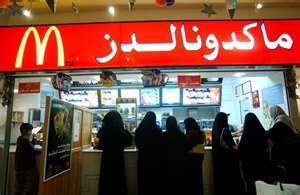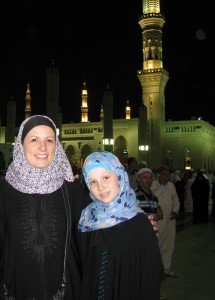Misyar marriage: definition and rulings
Source: Islam Q&A
Firstly:
Misyaar marriage is where a man does a shar’i marriage contract with a woman, meeting the conditions of marriage, but the woman gives up some of her rights such as accommodation, maintenance or the husband’s staying overnight with her.
The reasons that have led to the emergence of this kind of marriage are many, such as:
1.
Increase in the number of single women who are unable to get married, because young men are put off marriage due to the high cost of dowries and the costs of marriage, or because there is a high divorce rate. In such circumstances, some women will agree to be a second or third wife and to give up some of their rights.
2.
Some women need to stay in their family home, either because they are the only care-givers for family members, or because the woman has a handicap and her family do not want the husband to be burdened with something he cannot bear, and he stays in touch with her without having to put too great a burden on himself, or because she has children and cannot move with them to her husband’s house, and other reasons.
3.
Some married men want to keep some women chaste because they need that, or because they need variety and halaal pleasure, without that affecting the first wife and her children.
4.
In some cases a husband may want to conceal his second marriage from his first wife, for fear of the consequences that may result and affect their relationship.
5.
The man travels often to a certain place and stays there for lengthy periods. Undoubtedly staying there with a wife is safer for him than not doing so.
These are the most prominent reasons for the emergence of this kind of marriage.
Secondly:
The scholars differed concerning the ruling on this type of marriage, and there are several opinions, ranging from the view that it is permissible, to the view that it is permitted but makrooh, or that it is not allowed. Here we should point out several things.
1.
None of the scholars have said that it is invalid or is not correct; rather they disallowed it because of the consequences that adversely affect the woman, as it is demeaning to her, and that affects the society as this marriage contract is taken advantage of by bad people, because a woman could claim that a boyfriend is a husband. It also affects the children whose upbringing will be affected by their father’s absence.
2.
Some of those who said that it was permissible have retracted that view. Among the most prominent scholars who said that it was permissible were Shaykh ‘Abd al-‘Azeez ibn Baaz and Shaykh ‘Abd al-‘Azeez Aal al-Shaykh; and among the most prominent scholars who said that it was permissible and then retracted it was Shaykh al-‘Uthaymeen; among the most prominent scholars who said that it is not allowed at all was Shaykh al-Albaani.
3.
Those who said that it is permissible did not say that a time limit should be set as in the case of mut’ah. And they did not say that it is permissible without a wali (guardian), because marriage without a wali is invalid. And they did not say that the marriage contract may be done without witnesses or without being announced, rather it is essential to do one of the two.
Thirdly:
Opinion of the scholars concerning this type of marriage:
1.
Shaykh Ibn Baaz (may Allaah have mercy on him) was asked about Misyaar marriage; this kind of marriage is where the man marries a second, third or fourth wife, and the wife is in a situation that compels her to stay with her parents or one of them in her own house, and the husband goes to her at various times depending on the circumstances of both. What is the Islamic ruling on this type of marriage?
He replied:
2.
Shaykh ‘Abd al-‘Azeez Aal al-Shaykh (may Allaah preserve him) was asked:
There is a lot of talk about misyaar marriage being haraam or halaal. We would like a definitive statement about this matter from you, with a description of its conditions and obligations, if it is permissible.
He replied:
Shaykh al-Albaani was asked about Misyaar marriage and he disallowed it for two reasons:
(i)
That the purpose of marriage is repose as Allaah says (interpretation of the meaning): “And among His Signs is this, that He created for you wives from among yourselves, that you may find repose in them, and He has put between you affection and mercy. Verily, in that are indeed signs for a people who reflect” [al-Room 30:21]. But this is not achieved in this kind of marriage.
(ii)
It may be decreed that the husband has children with this woman, but because he is far away from her and rarely comes to her, that will be negatively reflected in his children’s upbringing and attitude.
See: Ahkaam al-Ta’addud fi Daw’ al-Kitaab wa’l-Sunnah (p. 28, 29).
4.
Shaykh Ibn ‘Uthaymeen (may Allaah have mercy on him) used to say that it was permissible, then he stopped saying that because of the negative effects, as it was poorly applied by some wrongdoers.
Finally, what we think is:
That if Misyaar marriage fulfils the conditions of a valid marriage, namely the proposal and acceptance, the consent of the wali and witnesses or announcement of the marriage, then it is a valid marriage contract, and it is good for some categories of men and women whose circumstances call for this type of marriage. But this may be taken advantage of by some whose religious commitment is weak, hence this permissibility should not be described as general in application in a fatwa, rather the situation of each couple should be examined, and if this kind of marriage is good for them then it should be permitted, otherwise they should not be allowed to do it. That is to prevent marriage for the sake of mere pleasure whilst losing the other benefits of marriage, and to prevent the marriage of two people whose marriage we may be certain is likely to fail and in which the wife will be neglected, such as one who will be away from his wife for many months, and will leave her on her own in an apartment, watching TV and visiting chat rooms and going on the internet. How can such a weak woman spend her time? This is different from one who lives with her family or children and has enough religious commitment, obedience, chastity and modesty to help her be patient during her husband’s absence.
And Allaah knows best.
Question:
Misyaar marriage was mentioned on your website. What is this marriage? Is it halaal or haram?Answer:
Praise be to Allaah.Firstly:
Misyaar marriage is where a man does a shar’i marriage contract with a woman, meeting the conditions of marriage, but the woman gives up some of her rights such as accommodation, maintenance or the husband’s staying overnight with her.
The reasons that have led to the emergence of this kind of marriage are many, such as:
1.
Increase in the number of single women who are unable to get married, because young men are put off marriage due to the high cost of dowries and the costs of marriage, or because there is a high divorce rate. In such circumstances, some women will agree to be a second or third wife and to give up some of their rights.
2.
Some women need to stay in their family home, either because they are the only care-givers for family members, or because the woman has a handicap and her family do not want the husband to be burdened with something he cannot bear, and he stays in touch with her without having to put too great a burden on himself, or because she has children and cannot move with them to her husband’s house, and other reasons.
3.
Some married men want to keep some women chaste because they need that, or because they need variety and halaal pleasure, without that affecting the first wife and her children.
4.
In some cases a husband may want to conceal his second marriage from his first wife, for fear of the consequences that may result and affect their relationship.
5.
The man travels often to a certain place and stays there for lengthy periods. Undoubtedly staying there with a wife is safer for him than not doing so.
These are the most prominent reasons for the emergence of this kind of marriage.
Secondly:
The scholars differed concerning the ruling on this type of marriage, and there are several opinions, ranging from the view that it is permissible, to the view that it is permitted but makrooh, or that it is not allowed. Here we should point out several things.
1.
None of the scholars have said that it is invalid or is not correct; rather they disallowed it because of the consequences that adversely affect the woman, as it is demeaning to her, and that affects the society as this marriage contract is taken advantage of by bad people, because a woman could claim that a boyfriend is a husband. It also affects the children whose upbringing will be affected by their father’s absence.
2.
Some of those who said that it was permissible have retracted that view. Among the most prominent scholars who said that it was permissible were Shaykh ‘Abd al-‘Azeez ibn Baaz and Shaykh ‘Abd al-‘Azeez Aal al-Shaykh; and among the most prominent scholars who said that it was permissible and then retracted it was Shaykh al-‘Uthaymeen; among the most prominent scholars who said that it is not allowed at all was Shaykh al-Albaani.
3.
Those who said that it is permissible did not say that a time limit should be set as in the case of mut’ah. And they did not say that it is permissible without a wali (guardian), because marriage without a wali is invalid. And they did not say that the marriage contract may be done without witnesses or without being announced, rather it is essential to do one of the two.
Thirdly:
Opinion of the scholars concerning this type of marriage:
1.
Shaykh Ibn Baaz (may Allaah have mercy on him) was asked about Misyaar marriage; this kind of marriage is where the man marries a second, third or fourth wife, and the wife is in a situation that compels her to stay with her parents or one of them in her own house, and the husband goes to her at various times depending on the circumstances of both. What is the Islamic ruling on this type of marriage?
He replied:
There is nothing wrong with that if the
marriage contract fulfils all the conditions set out by sharee’ah, which
is the presence of the wali and the consent of both partners, and the
presence of two witnesses of good character to the drawing up of the
contract, and both partners being free of any impediments, because of
the general meaning of the words of the Prophet (peace and blessings of
Allaah be upon him): “The conditions that are most deserving of being
fulfilled are those by means of which intimacy becomes permissible for
you” and “The Muslims are bound by their conditions.” If the partners
agree that the woman will stay with her family or that her share of the
husband’s time will be during the day and not during the night, or on
certain days or certain nights, there is nothing wrong with that, so
long as the marriage is announced and not hidden. End quote.
Fataawa ‘Ulama’ al-Balad al-Haraam (p. 450, 451) and Jareedah al-Jazeerah issue no. 8768, Monday 18 Jumaada al-Oola 1417 AH.
However, some students of the Shaykh said that he later retracted the
view that it is permissible, but we could not find anything in writing
to prove that.2.
Shaykh ‘Abd al-‘Azeez Aal al-Shaykh (may Allaah preserve him) was asked:
There is a lot of talk about misyaar marriage being haraam or halaal. We would like a definitive statement about this matter from you, with a description of its conditions and obligations, if it is permissible.
He replied:
The conditions of marriage are that the
two partners should be identified and give their consent, and there
should be a wali (guardian) and two witnesses. If the conditions are met
and the marriage is announced, and they do not agree to conceal it,
either the husband, the wife or their guardians, and he offered a
waleemah or wedding feast, then this marriage is valid, and you can call
it whatever you want after that. End quote.
Jareedah al-Jazeerah, Friday 15 Rabee’ al-Thaani 1422 AH, issue no. 10508.
3.Shaykh al-Albaani was asked about Misyaar marriage and he disallowed it for two reasons:
(i)
That the purpose of marriage is repose as Allaah says (interpretation of the meaning): “And among His Signs is this, that He created for you wives from among yourselves, that you may find repose in them, and He has put between you affection and mercy. Verily, in that are indeed signs for a people who reflect” [al-Room 30:21]. But this is not achieved in this kind of marriage.
(ii)
It may be decreed that the husband has children with this woman, but because he is far away from her and rarely comes to her, that will be negatively reflected in his children’s upbringing and attitude.
See: Ahkaam al-Ta’addud fi Daw’ al-Kitaab wa’l-Sunnah (p. 28, 29).
4.
Shaykh Ibn ‘Uthaymeen (may Allaah have mercy on him) used to say that it was permissible, then he stopped saying that because of the negative effects, as it was poorly applied by some wrongdoers.
Finally, what we think is:
That if Misyaar marriage fulfils the conditions of a valid marriage, namely the proposal and acceptance, the consent of the wali and witnesses or announcement of the marriage, then it is a valid marriage contract, and it is good for some categories of men and women whose circumstances call for this type of marriage. But this may be taken advantage of by some whose religious commitment is weak, hence this permissibility should not be described as general in application in a fatwa, rather the situation of each couple should be examined, and if this kind of marriage is good for them then it should be permitted, otherwise they should not be allowed to do it. That is to prevent marriage for the sake of mere pleasure whilst losing the other benefits of marriage, and to prevent the marriage of two people whose marriage we may be certain is likely to fail and in which the wife will be neglected, such as one who will be away from his wife for many months, and will leave her on her own in an apartment, watching TV and visiting chat rooms and going on the internet. How can such a weak woman spend her time? This is different from one who lives with her family or children and has enough religious commitment, obedience, chastity and modesty to help her be patient during her husband’s absence.
And Allaah knows best.

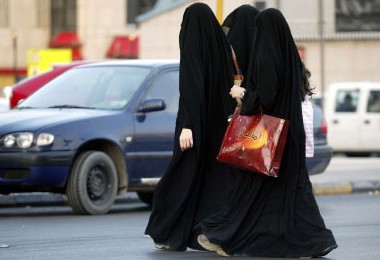
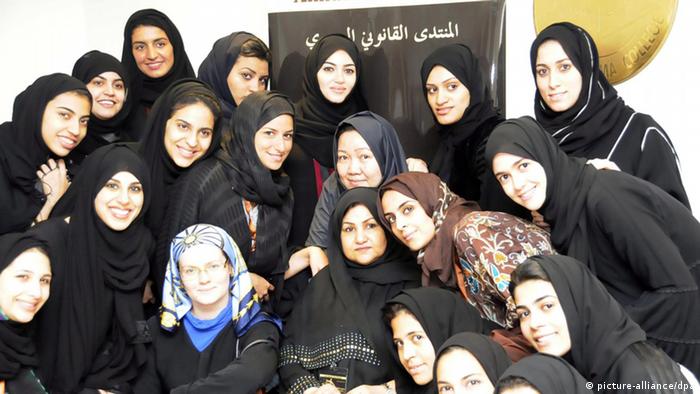
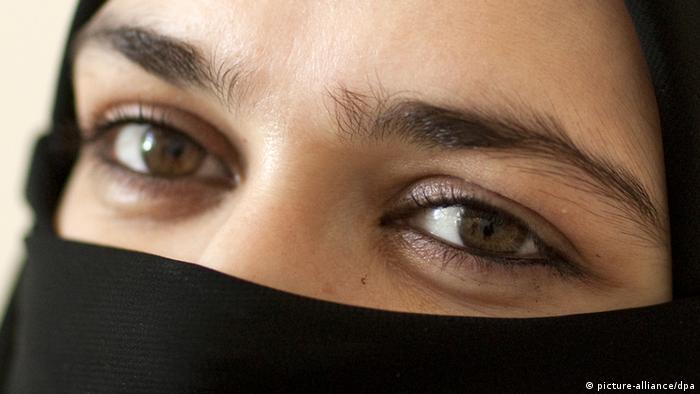 It may not appear so on the surface but Saudi society is opening up
It may not appear so on the surface but Saudi society is opening up Women are gaining more rights
Women are gaining more rights

 Last
week it has been registered a serious cyber attacks against the one of
the world’s largest energy companies, the Saudi Aramco, and a group
named the Arab Youth Group has claimed responsibility for the event.
Last
week it has been registered a serious cyber attacks against the one of
the world’s largest energy companies, the Saudi Aramco, and a group
named the Arab Youth Group has claimed responsibility for the event. The
Saudi and Bahraini monarchies recently announced the engagement of a
Saudi princess to a Bahraini prince. A substantial bridal party has
preceded her, though.
The
Saudi and Bahraini monarchies recently announced the engagement of a
Saudi princess to a Bahraini prince. A substantial bridal party has
preceded her, though. 















